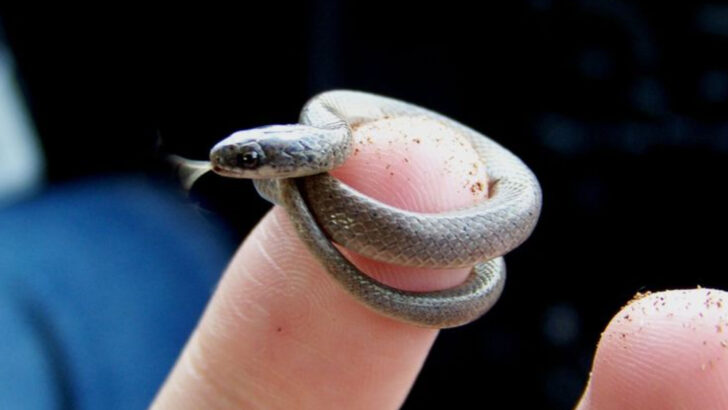When it comes to snakes, most people think of the more well-known species like pythons, cobras, or rattlesnakes. But the world of snakes is much more diverse, and some species are truly remarkable—and not always in the ways you’d expect. From vibrant colors to strange patterns and unusual behaviors, these rare and unusual snakes have fascinated herpetologists and nature lovers alike. Some are so elusive that they’re hardly ever seen, while others are a mystery waiting to be unraveled.
If you’re someone who’s intrigued by the more obscure creatures of the animal kingdom, you’ll want to know about these hidden gems of the snake world. Some live in remote locations, while others have developed surprising adaptations to survive in extreme environments. So, get ready to discover 22 snake species that are anything but ordinary—and may just change the way you think about these slithering creatures.
Long-nosed Vine Snake
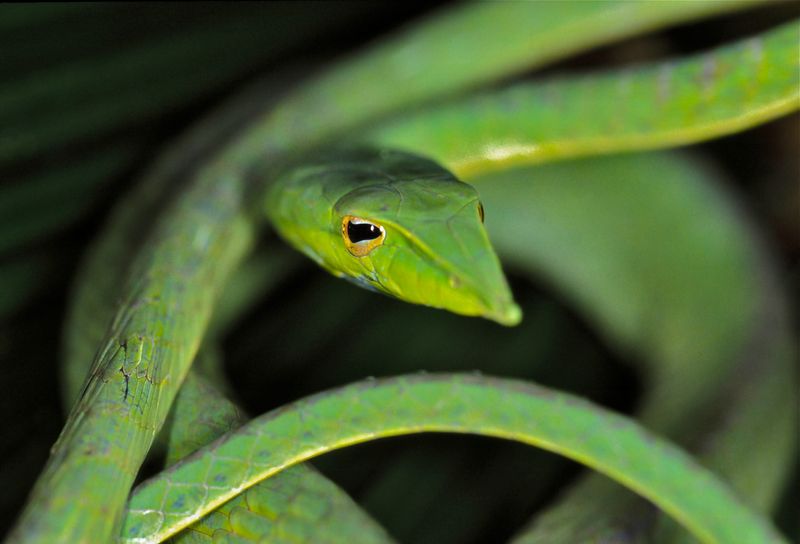
The long-nosed vine snake, known for its strikingly thin body and elongated nose, is a marvel of adaptation. Found in the dense rainforests of Southeast Asia, this snake expertly camouflages among vines and foliage. Its green color not only helps it blend in but also makes it a master of stealth.
This snake is primarily arboreal, spending most of its life in trees. It preys on small birds, lizards, and frogs, using its long, agile body to navigate branches. With its fascinating appearance and unique hunting style, the long-nosed vine snake remains a captivating species to study.
Barbados Threadsnake
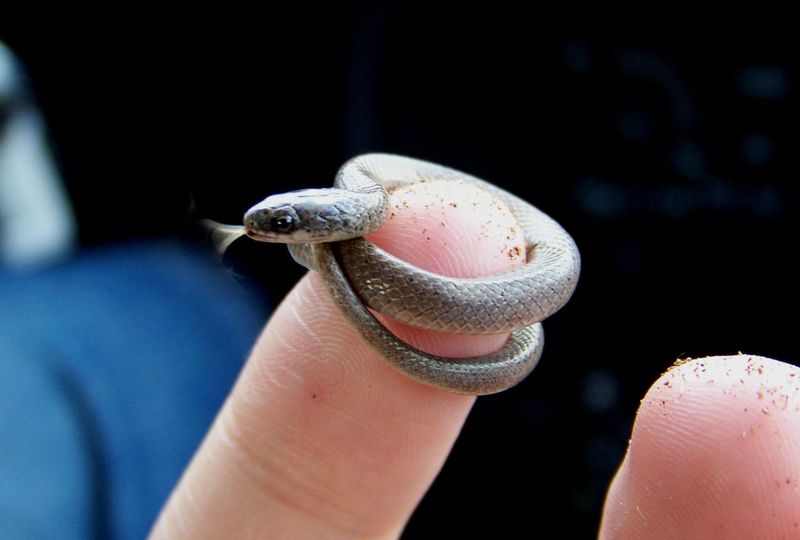
The Barbados Threadsnake, considered one of the world’s smallest snakes, is a true island native. Measuring just about four inches in length, this petite serpent is often mistaken for a worm. Its habitat is the rich, sandy soils of Barbados, where it burrows and searches for small invertebrates.
Despite its size, the Barbados Threadsnake plays a vital role in controlling insect populations. Its unobtrusive nature makes it a rare sight, often missed by those not specifically searching for it. This intriguing species showcases the unique adaptations of island life.
Dragon Snake
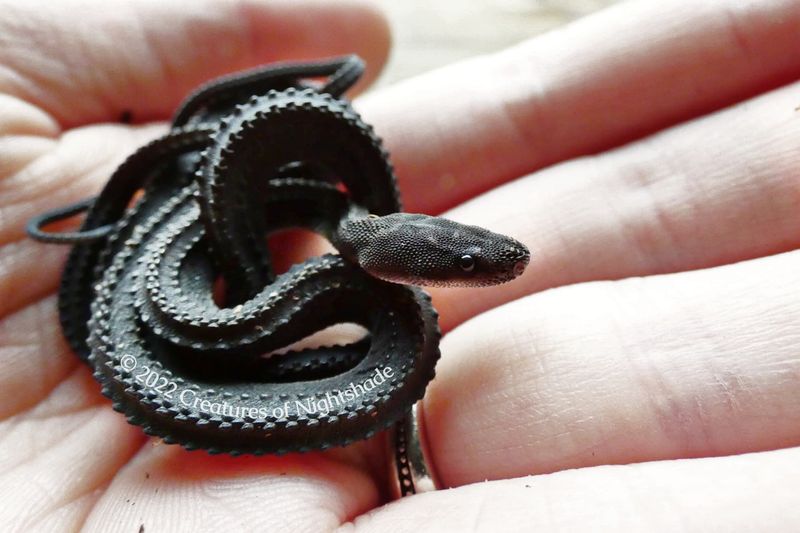
The dragon snake is a creature of folklore and mystery, with its unique, armored appearance. Found in parts of Southeast Asia, this snake is easily recognized by its dark scales and ridge-like texture. It seems to have stepped straight out of a fantasy novel.
Unlike most snakes, the dragon snake is nocturnal, hunting for frogs and small fish in the cover of night. Its calm demeanor and peculiar looks have made it a favorite among exotic pet enthusiasts. However, it remains a wild species, best appreciated in its natural environment.
Spiny Bush Viper
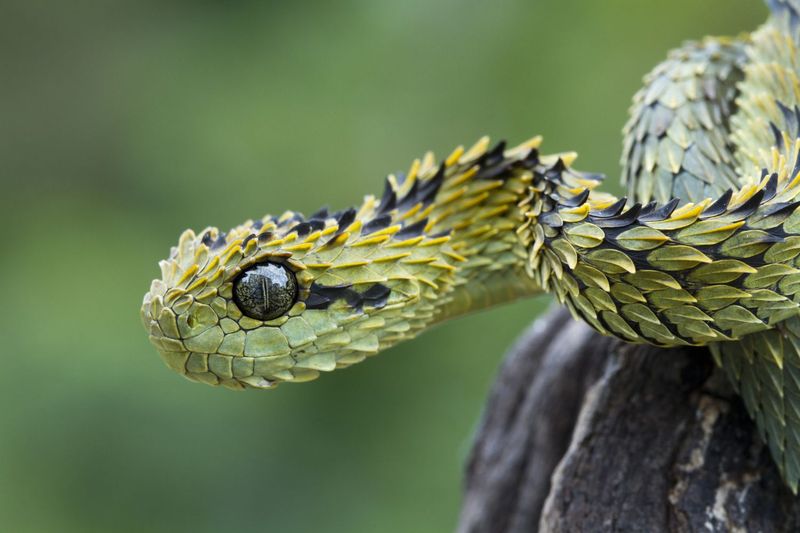
The spiny bush viper, native to the forests of Central Africa, is a vivid green snake with a texture reminiscent of pinecones. Its scales are uniquely keeled, giving it a spiny appearance. This snake is both beautiful and venomous, using its bite to subdue prey.
It resides primarily in trees, where it hunts birds and small mammals. The spiny bush viper’s striking looks make it a subject of fascination, yet it’s crucial to remember its potential danger. Observing this snake in the wild offers insights into the complexity of nature’s designs.
Tentacled Snake
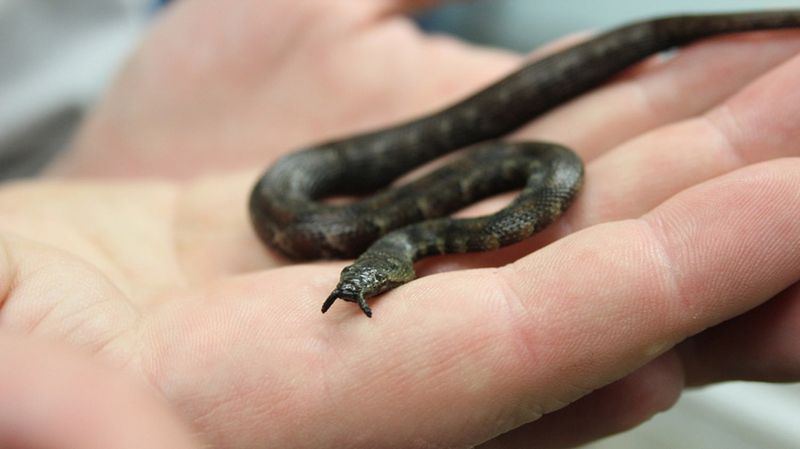
The tentacled snake is a master of deception, utilizing its unique appendages to confuse prey. Found in the murky waters of Southeast Asia, this snake has small tentacle-like structures on its snout. These are sensitive to movement, helping it detect fish.
As a predominantly aquatic snake, it spends much of its time submerged, using ambush tactics to catch its prey. The tentacled snake’s appearance is as fascinating as its hunting strategy, making it a compelling subject for those interested in evolutionary biology and the adaptive wonders of nature.
Horned Viper
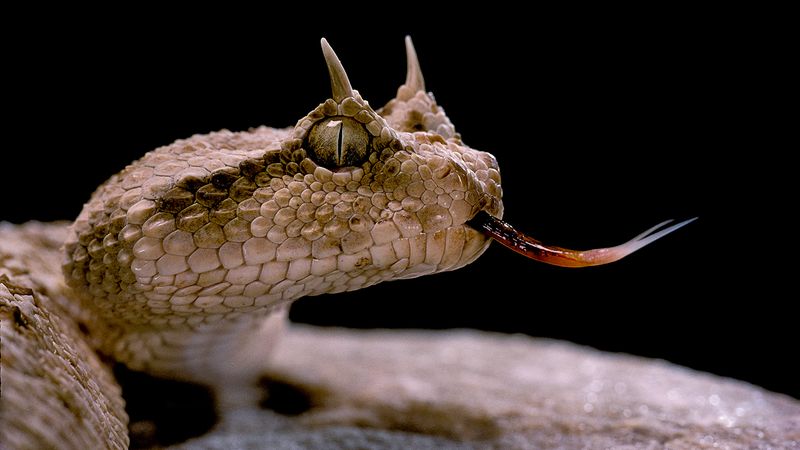
The horned viper, residing in the arid deserts of North Africa and the Middle East, is known for its distinctive horns. These supraocular scales give the snake an intimidating look, perfectly suited to its harsh environment.
It is a master of camouflage, blending seamlessly with the sandy dunes. This snake primarily feeds on small mammals and birds, using venom to incapacitate its prey. The horned viper’s unique features make it a symbol of survival and adaptation, showcasing nature’s ingenuity in the face of extreme conditions.
Elephant Trunk Snake
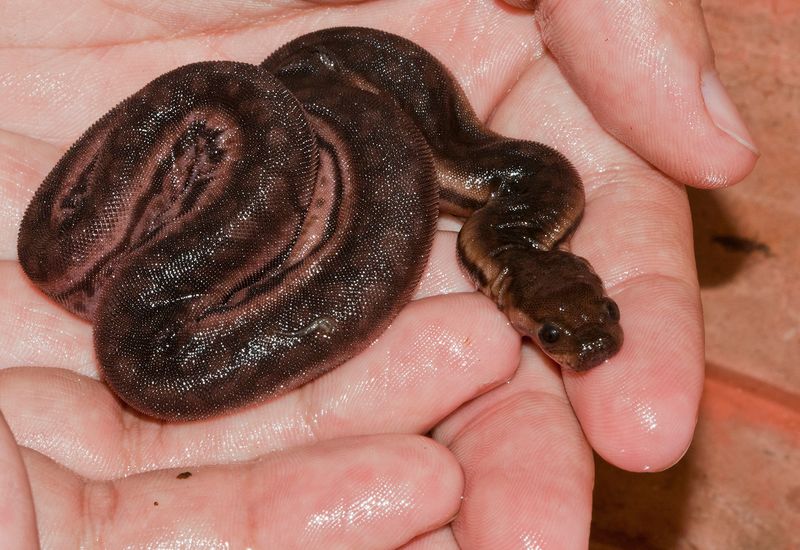
The elephant trunk snake is an aquatic marvel, aptly named for its baggy skin that resembles an elephant’s trunk. Found in the freshwater environments of Southeast Asia, this snake is well adapted to an aquatic life.
It preys on fish and amphibians, using its rough skin to maintain grip on slippery prey. The elephant trunk snake is a prime example of evolutionary adaptation, illustrating how species evolve to suit their habitats. Its unusual appearance and lifestyle make it a subject of intrigue for herpetologists and nature enthusiasts alike.
Atheris Hispida
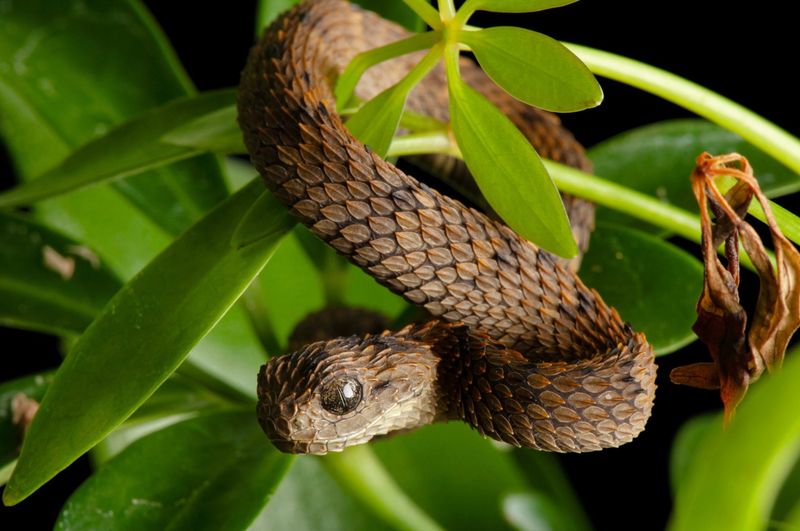
Atheris hispida, often referred to as the bush viper, is a striking snake with vivid coloration and spiny scales. Found in the rainforests of Central Africa, its appearance is both captivating and intimidating.
This snake is primarily arboreal, spending its time in trees where it hunts birds and rodents. Its venomous bite is lethal to its prey, making it an efficient predator. Despite its small size, Atheris hispida is a testament to nature’s ability to create beauty and danger in equal measures, captivating all who encounter it.
Santa Catalina Island Rattlesnake
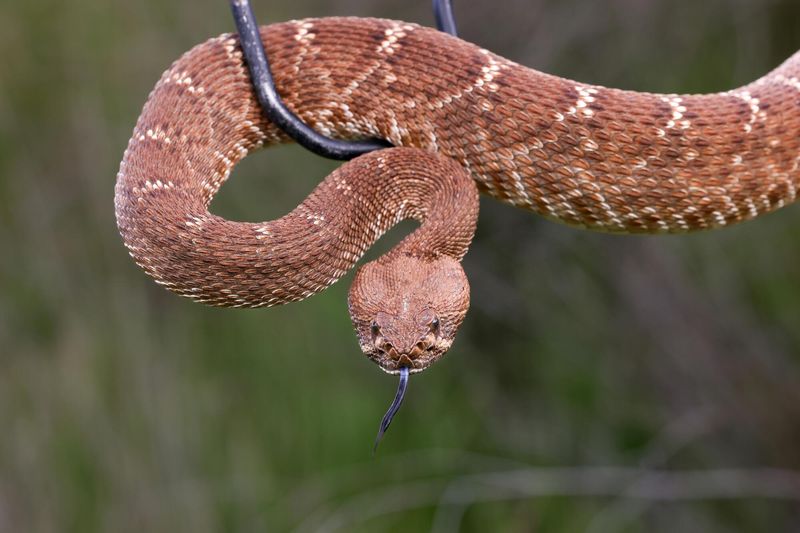
The Santa Catalina Island rattlesnake, native to Mexico’s Santa Catalina Island, is a fascinating anomaly in the rattlesnake family. Unlike its relatives, it lacks a rattle, an adaptation believed to suit its isolated environment.
This snake’s muted coloration helps it blend with the rocky terrain, making it an ambush predator. It feeds on birds and small mammals, using venom to subdue its prey. The absence of a rattle may be a response to limited threats on the island, highlighting how isolation can drive unique evolutionary paths.
Sunbeam Snake
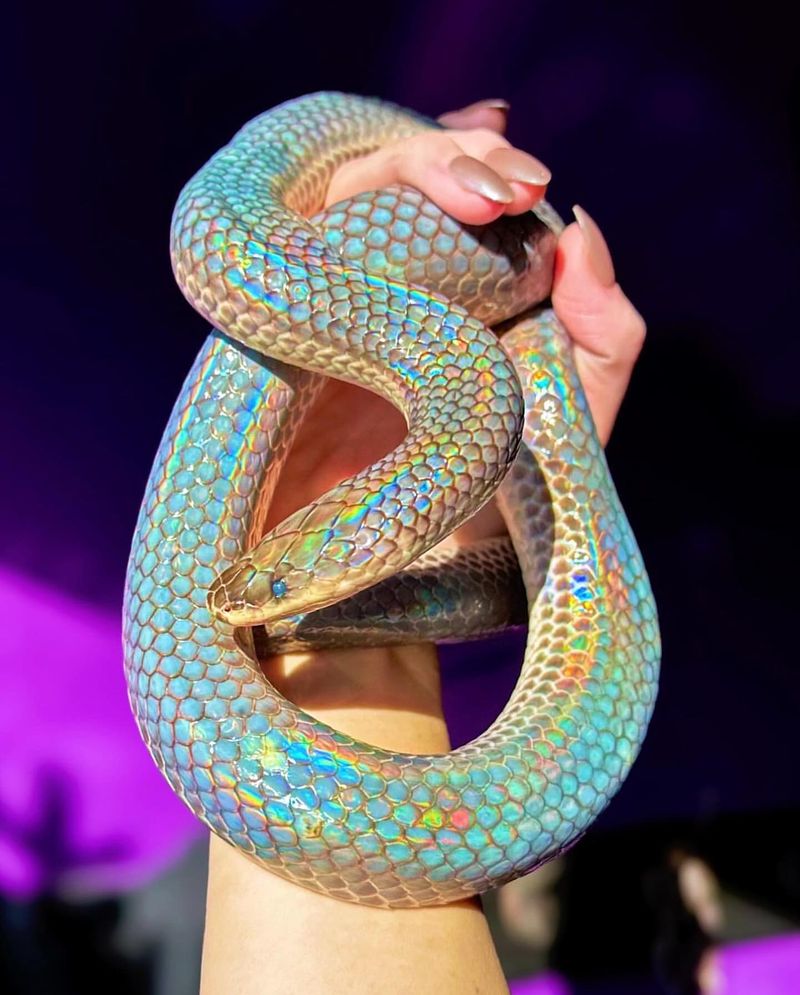
The sunbeam snake is a shimmering gem of the snake world, renowned for its iridescent scales. Found in parts of Southeast Asia, its scales reflect a spectrum of colors, akin to a rainbow.
This snake leads a secretive life, burrowing in the forest floor and hunting small vertebrates. Its beauty is not just skin deep—it’s a skilled predator capable of subduing a variety of prey. The sunbeam snake is a delight to observe, offering a glimpse into the enchanting aesthetics that wildlife can offer to admirers and scientists alike.
Anomalous Sea Snake
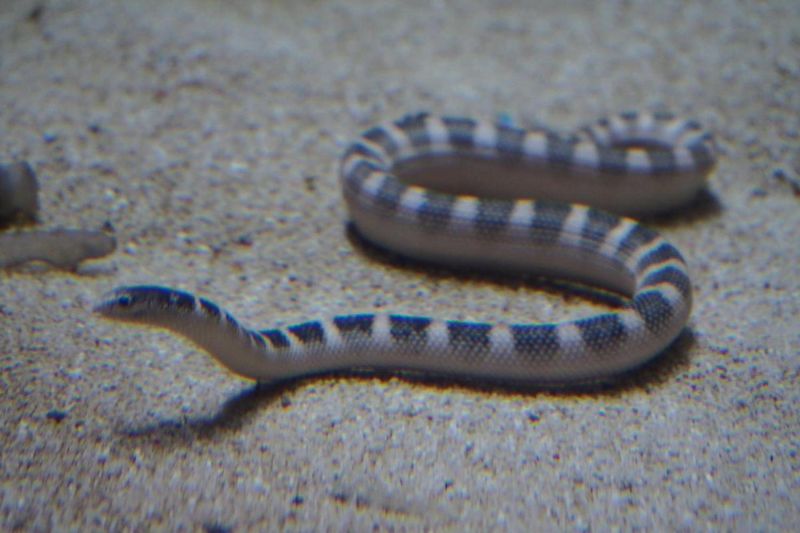
The anomalous sea snake stands out with its distinct banded pattern and aquatic lifestyle. Found in the warm coastal waters of the Indian Ocean, this snake is an agile swimmer and formidable predator.
Its bands serve as camouflage among coral reefs, where it hunts fish and eels. Despite its venomous bite, it poses little threat to humans unless provoked. The anomalous sea snake highlights the diversity of marine life and the specialized adaptations that enable survival in oceanic environments, captivating those who study the mysteries of the sea.
Banded Flying Snake
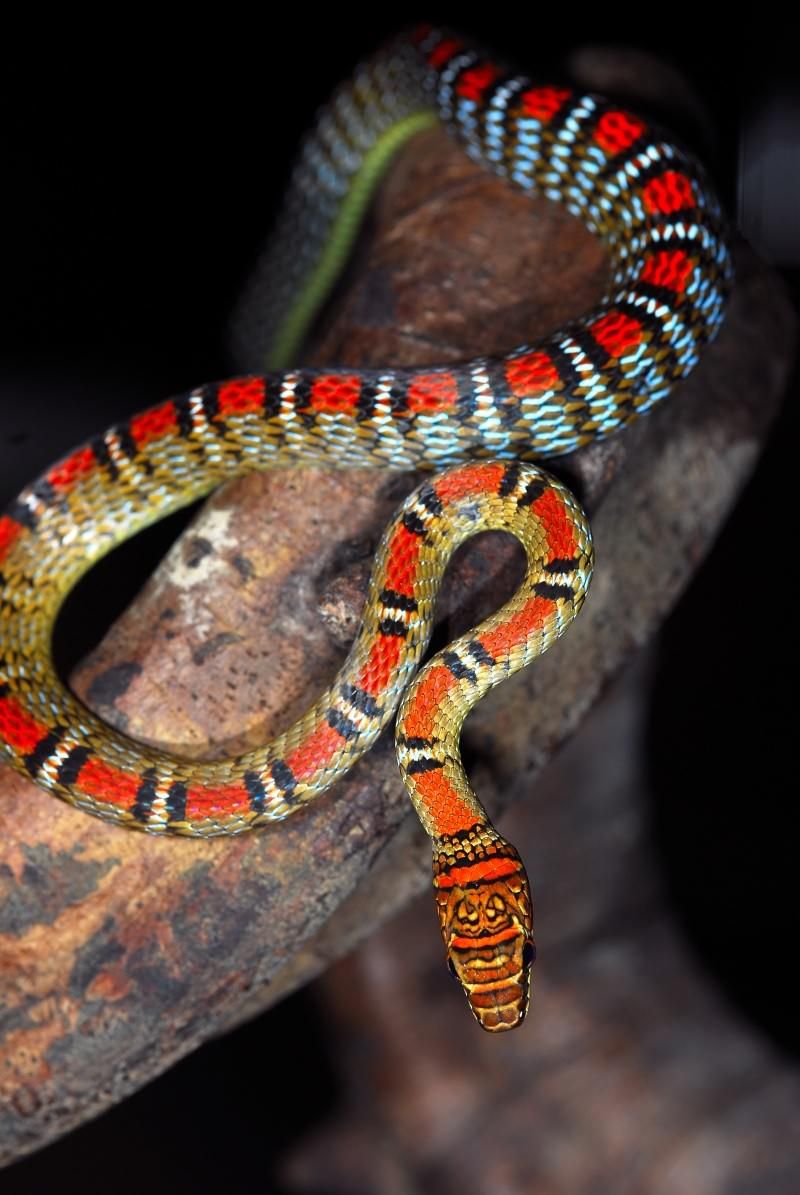
The banded flying snake is a marvel of locomotion, capable of gliding between trees. Found in the forests of Southeast Asia, this snake’s vibrant bands make it a spectacle in motion.
Unlike most snakes, it can launch itself from high branches, flattening its body to glide to another tree. This remarkable ability is both a means of escape and a hunting strategy. It preys on lizards and frogs, showcasing its agility and precision. The banded flying snake is an extraordinary example of evolution, demonstrating nature’s endless capacity for innovation.
Blue Coral Snake
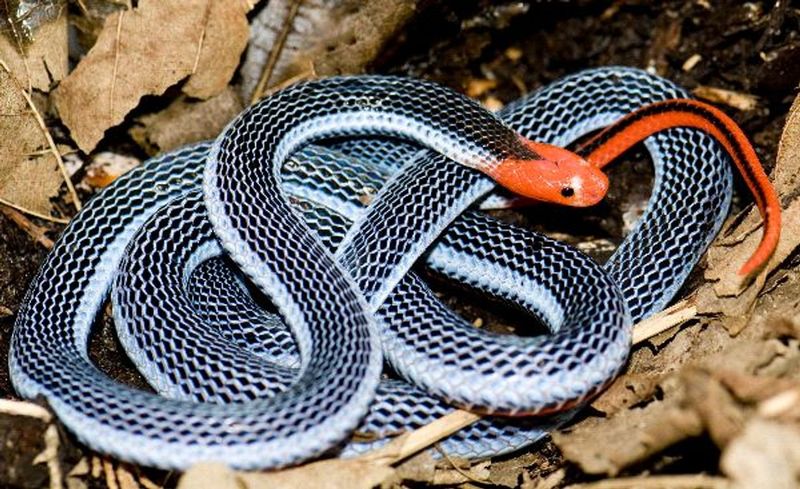
The blue coral snake is a striking creature, adorned with vivid blue and red stripes. Native to the jungles of Southeast Asia, this snake is as dangerous as it is beautiful, with venom potent enough to incapacitate prey quickly.
Its bright colors serve as a warning to potential predators, a common trait among venomous species. The blue coral snake’s diet primarily consists of other snakes, including venomous ones, making it a top predator. Observing this snake provides insight into the adaptations and roles within its ecosystem, highlighting the complexity of predator-prey relationships.
Brazilian Rainbow Boa
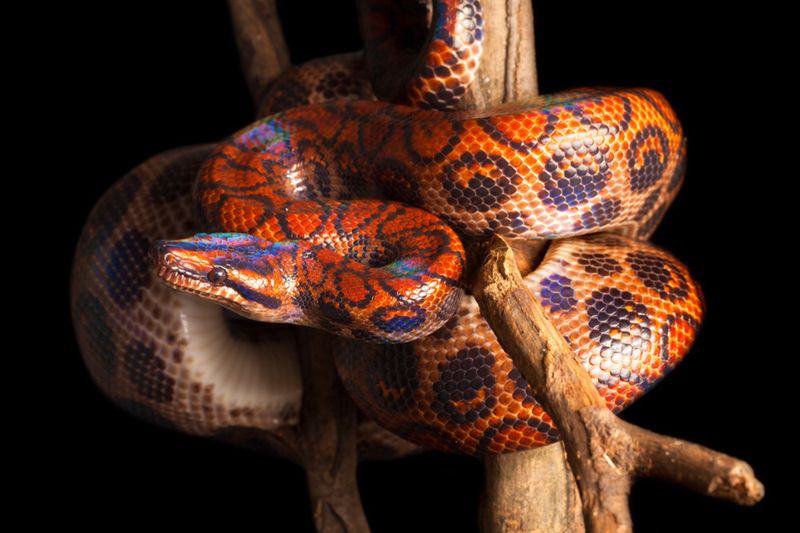
The Brazilian rainbow boa is famed for its dazzling iridescent scales, which appear to shimmer with every movement. Found in the rainforests of Brazil, this snake is a sight to behold for any wildlife enthusiast.
Its coloration provides camouflage among the forest foliage, where it hunts birds and small mammals. The Brazilian rainbow boa is a non-venomous constrictor, using its powerful body to subdue prey. This snake’s beauty and hunting prowess make it a fascinating subject for those studying tropical reptiles, reflecting the vibrant diversity of South American wildlife.
Red Sand Boa
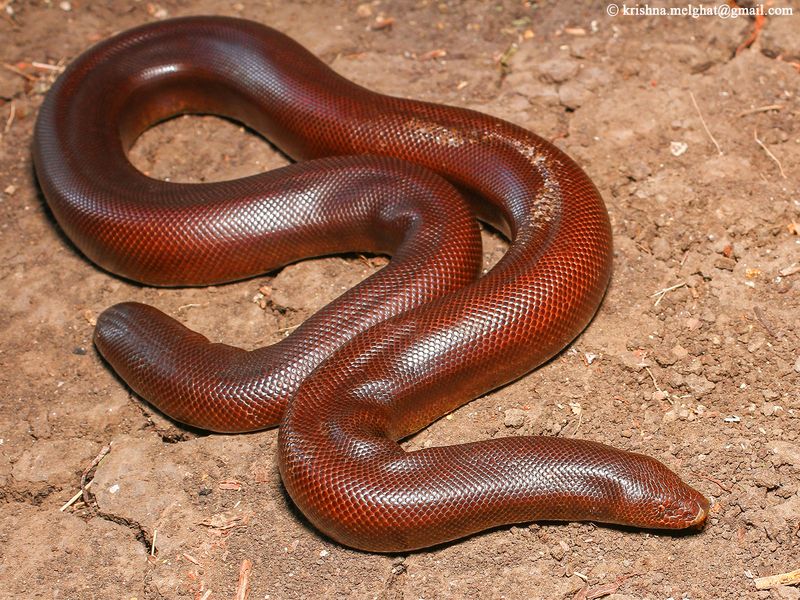
The red sand boa is a stout, burrowing snake found in the arid desert regions of India. Its reddish-brown coloration perfectly matches its sandy habitat, allowing it to remain hidden from predators and prey alike.
It is a non-venomous species, relying on its strong muscles to constrict small mammals and reptiles. The red sand boa’s elusive nature and unique appearance make it a creature of curiosity among herpetologists. Its ability to thrive in harsh desert conditions demonstrates the resilience and adaptability of life in some of the world’s most challenging environments.
Eyelash Viper
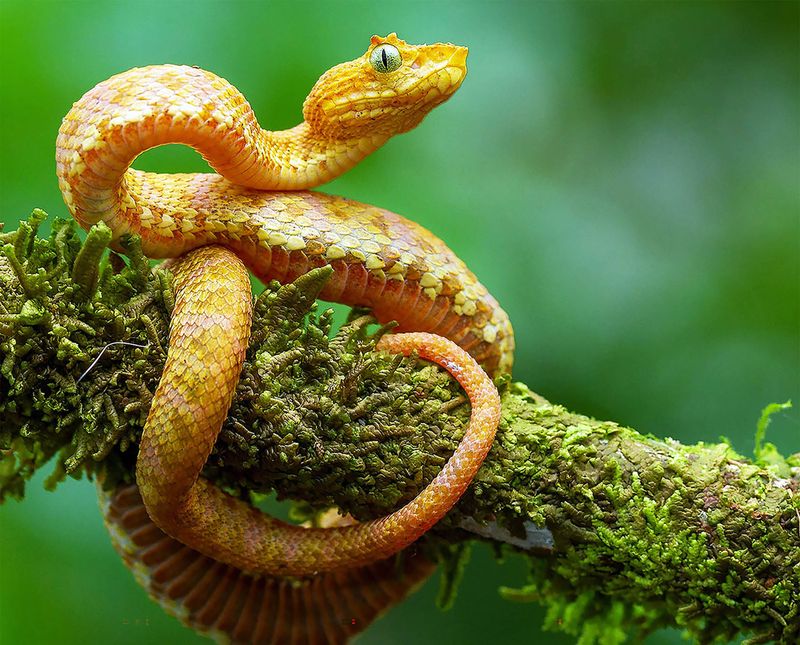
The eyelash viper is a vividly colored snake with unique scale protrusions above its eyes, resembling lashes. Found in Central and South American rainforests, this snake is both beautiful and deadly.
Its colorful appearance serves as camouflage among the flowers and leaves, where it ambushes birds and small mammals. The eyelash viper’s venomous bite is potent, ensuring swift capture of prey. This snake is a prime example of the beauty and danger that coexist in nature, and its distinct features make it a popular subject of interest for nature photographers and researchers.
Black-Headed Python
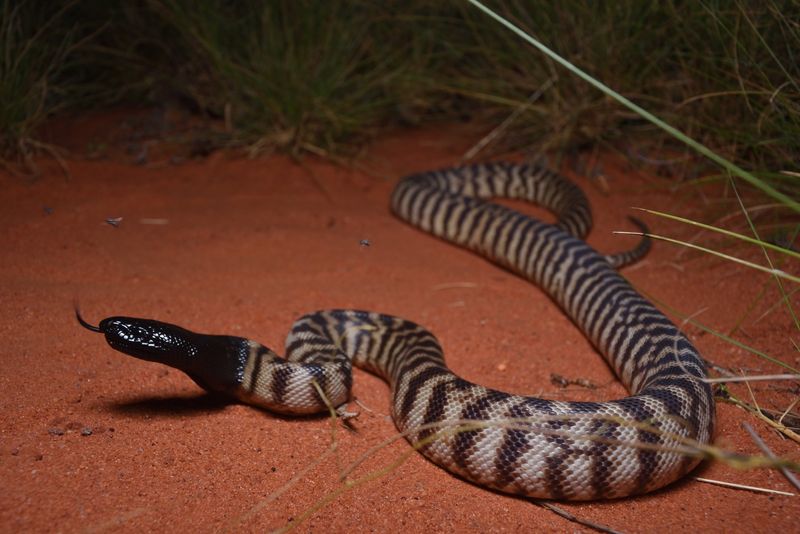
The black-headed python, native to Australia, is a striking snake with a glossy black head and smooth, patterned body. This non-venomous python inhabits the arid, rocky regions of Australia, where it preys on reptiles, including venomous snakes.
Its unique coloration aids in thermoregulation, allowing it to absorb heat efficiently. The black-headed python’s dietary preferences and striking appearance make it a fascinating study for those interested in evolutionary biology. This snake is a testament to the diverse adaptations that allow species to thrive in a variety of habitats across the globe.
Malagasy Leaf-Nosed Snake
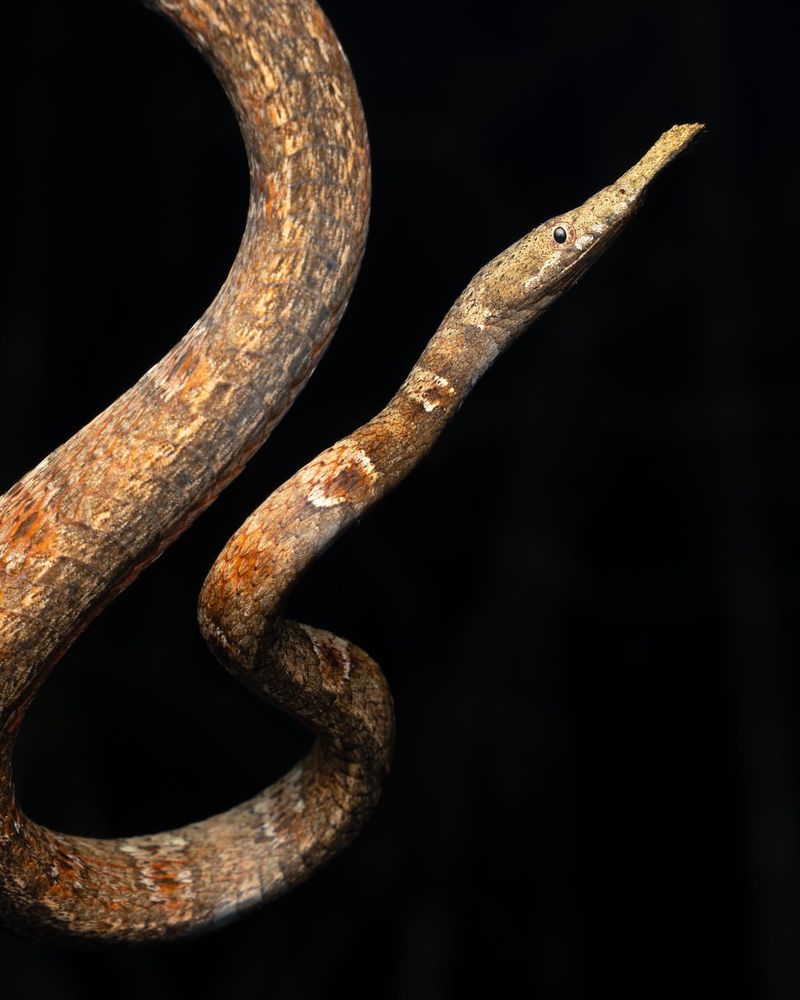
The Malagasy leaf-nosed snake, endemic to Madagascar, is a master of mimicry, with its leaf-shaped snout. This unique adaptation allows it to blend seamlessly with the forest floor and foliage.
The snake’s primary prey includes small reptiles and amphibians, which it catches with stealth and precision. Its cryptic appearance not only aids in hunting but also in evading predators. The Malagasy leaf-nosed snake is a fascinating example of how evolution can shape species to fit their environments so perfectly, making it a subject of intrigue for evolutionary scientists and nature lovers alike.
Golden Lancehead
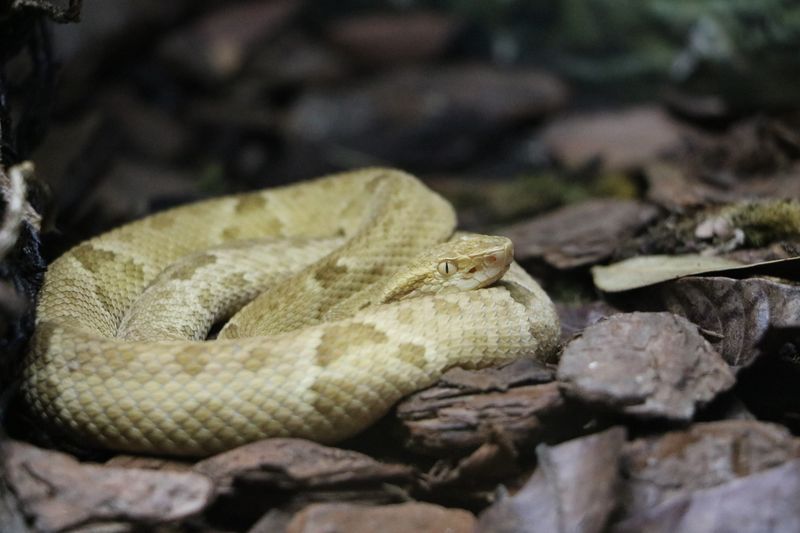
The golden lancehead, a venomous pit viper, is found exclusively on Brazil’s Snake Island. Its golden hue and potent venom make it one of the most intriguing serpents.
This snake’s diet mainly consists of birds, which it hunts in the island’s dense foliage. The golden lancehead’s isolation has led to a highly specialized existence, as it adapted to life in a restricted environment. Its presence on Snake Island offers a unique perspective on how geographical isolation can drive significant evolutionary changes, making it a key species for researchers studying speciation and adaptation.
Sri Lankan Pit Viper
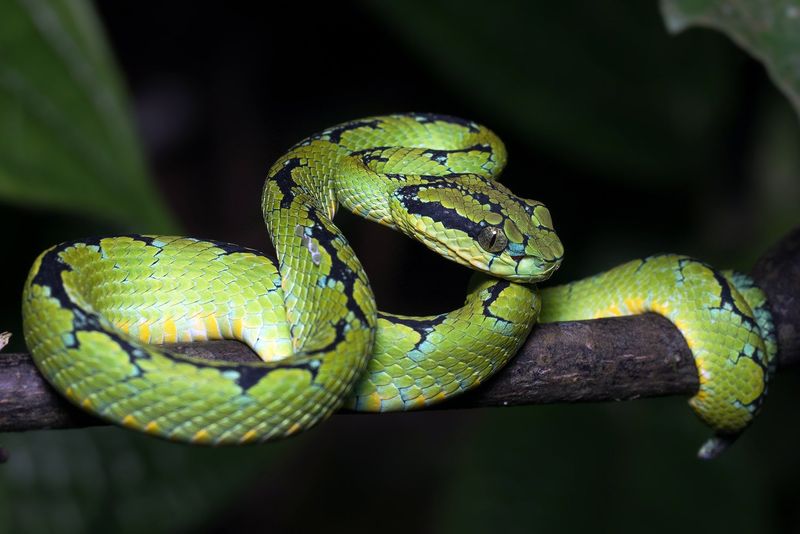
The Sri Lankan pit viper is a vibrant, venomous snake found in the lush rainforests of Sri Lanka. Its striking green coloration provides excellent camouflage among the leaves, aiding in its ambush hunting style.
This snake primarily preys on small mammals and birds, utilizing its heat-sensing pits to locate prey. The Sri Lankan pit viper’s beauty and deadly precision make it a fascinating subject of study. Its role in maintaining ecological balance in its native habitat underscores the importance of conserving such unique and vital species, ensuring they continue to thrive.
African Bush Viper
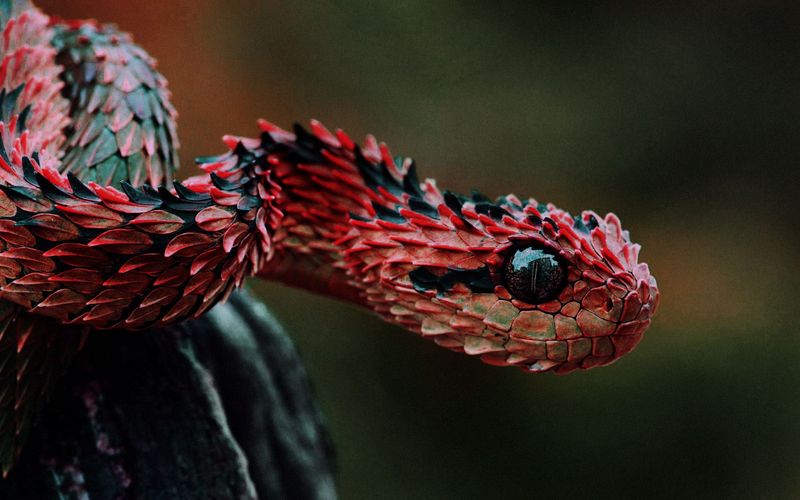
The African bush viper is a vibrant and venomous snake, easily recognized by its spiny scales and vivid hues. Inhabiting the forests of Central Africa, this snake is primarily arboreal, spending much of its time in trees.
Its diet consists mainly of small birds and rodents, which it captures with a swift, venomous strike. The African bush viper’s unique appearance and behavior make it a subject of interest for herpetologists and wildlife enthusiasts. Its presence in the forest ecosystem highlights the diverse adaptations that enable survival in some of the world’s most complex habitats.
Tinsel-Tailed Serpent
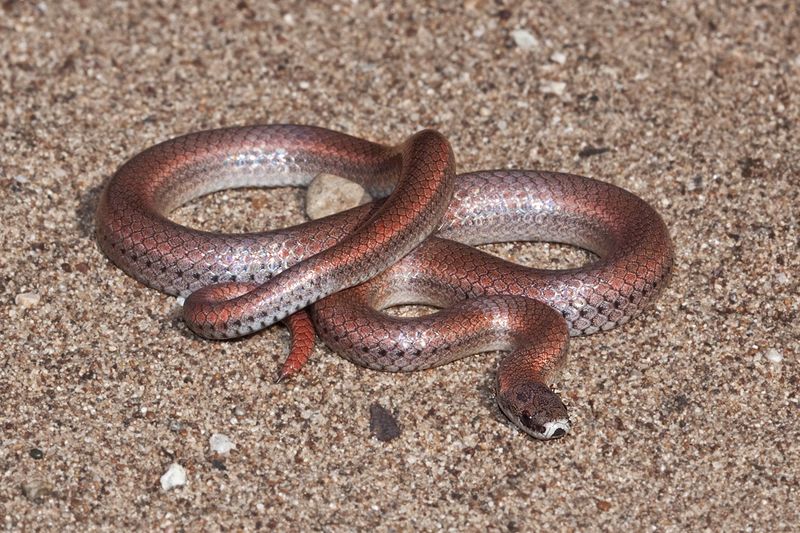
The Tinsel-Tailed Serpent is a dazzling spectacle in the snake world, boasting iridescent scales reminiscent of holiday tinsel. Found in the remote jungles of the Amazon, this elusive snake uses its glistening tail to confuse predators, reflecting sunlight like a prism. Its slender body and piercing emerald eyes make it a master of camouflage among the lush foliage.
Despite its flamboyant appearance, the Tinsel-Tailed Serpent is a shy creature, often hidden from the prying eyes of humans. It feeds primarily on small mammals and birds, using its agility to navigate the dense jungle with ease. Truly a marvel of nature, this snake is a testament to nature’s creativity.

